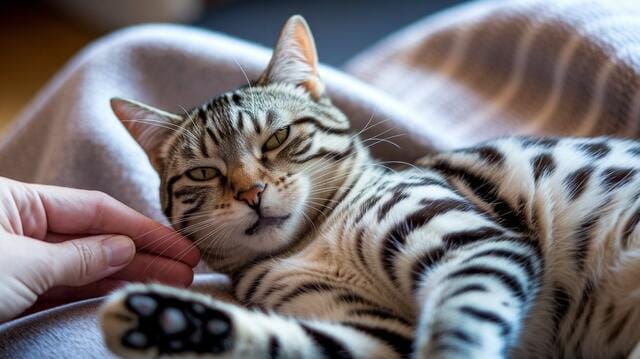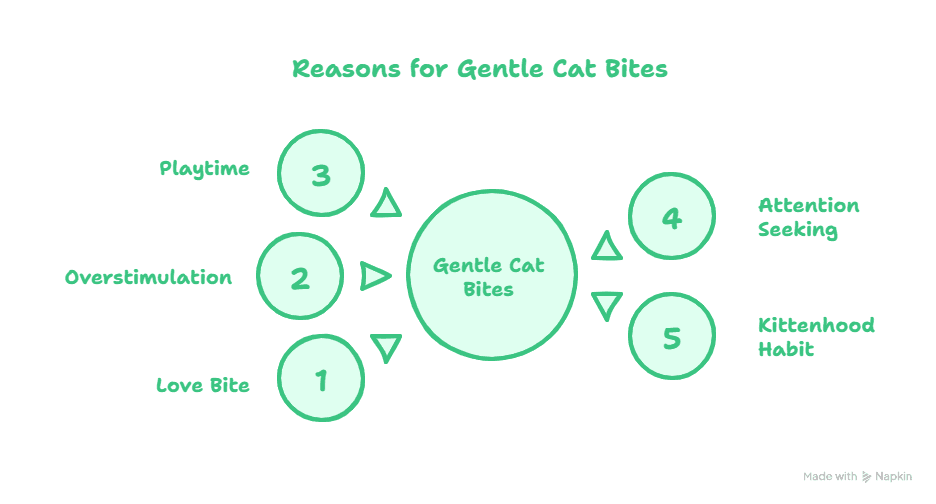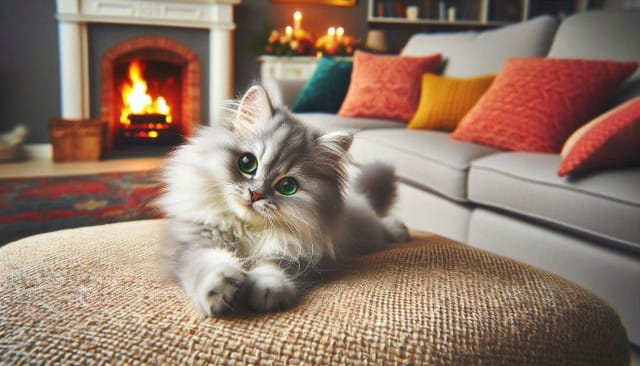
Introduction
You’re relaxing on the couch, petting your cat, when suddenly—chomp!—they give you a gentle bite… all while purring! If you’ve ever found yourself asking, “Why does my cat bite me gently while purring?” you’re not alone. This confusing mix of affection and slight aggression is actually more common than you’d think—and there’s a lot more behind it than just mood swings.
Let’s unravel the mystery behind those affectionate nips and purrs and figure out what your cat is really trying to say.
Understanding Cat Communication
Cats are subtle communicators. Unlike dogs, who wear their emotions on their sleeves (or tails), cats use a mix of body language, vocalizations, and behaviors to express themselves. Purring and biting—two seemingly opposite actions—can actually go hand in hand.
Purring is often associated with comfort, contentment, or self-soothing, while biting, depending on the context, can mean playfulness, overstimulation, or even affection.
So when your cat purrs and then gently bites you, they’re combining signals. The key is to read the situation and their body language to understand the message.

1. It’s a Love Bite
Let’s start with the sweetest possibility: the love bite. Gentle biting, especially during cuddles or petting sessions, is often your cat’s way of showing affection.
It mimics the kind of grooming behavior cats engage in with those they trust, especially between kittens and their mothers. This kind of nibbling is soft, controlled, and doesn’t break the skin. It’s your cat saying, “I like you a lot.”
2. Overstimulation While Petting
Even the most loving pets have a limit, and cats are no different. Sometimes, your cat might enjoy petting up to a point, then suddenly bite. If they’re purring while this happens, it might seem confusing, but it’s a classic case of petting-induced overstimulation.
Signs it’s coming:
– Tail flicking
– Ears turning back
– Skin twitching
– Sudden freezing or shifting posture
In this case, the purring might be part of your cat trying to stay relaxed, but when it gets to be too much, they bite to say, “That’s enough!”
3. It’s Playtime!
Cats often combine purring with playful behavior, especially younger cats and kittens. If your cat is purring, lightly biting, and maybe bunny-kicking or chasing your hand, they’re likely in play mode.
This is common when you engage your cat in light petting that triggers their natural instincts to pounce or chase. It’s not aggression—it’s just your cat being a cat.
4. They’re Trying to Get Your Attention
Sometimes, biting while purring is your cat’s way of saying something—and no, it’s not “I hate you.”
They may be:
– Asking for food
– Requesting more (or less) petting
– Wanting playtime
– Telling you they need space
It’s a form of communication. Just like a toddler tugging at your sleeve, your cat might give you a light nip while purring to get a message across.
5. A Habit from Kittenhood
Cats who were weaned too early or didn’t have enough littermate interaction may develop biting habits as part of their way of showing affection or seeking comfort.
If your cat has always bitten you gently, even as a kitten, this may just be a habit formed early in life. These cats may also knead, suck on blankets, or groom you obsessively.
When to Worry: Is It More Than Just a Gentle Bite?
While gentle biting is usually harmless, you should be cautious if the behavior:
– Escalates into aggressive biting
– Is paired with hissing or growling
– Causes wounds or scratches
– Happens without any obvious triggers
In these cases, the biting may be a sign of stress, fear, or even pain, and it’s worth checking in with a veterinarian or behaviorist.
How to Respond When Your Cat Bites Gently
Gentle bites aren’t meant to be punished, but they also shouldn’t be encouraged if you’re uncomfortable.
Here’s how to handle it:
✅ Stay calm—don’t yell or react suddenly.
✅ Gently stop petting and move your hand away.
✅ Redirect attention to a toy or treat.
✅ Pay attention to triggers—note when biting usually happens.
✅ Reward calm behavior to reinforce gentler responses.
How to Prevent Biting While Purring
To prevent those surprise nibbles:
– Keep petting sessions short and watch for signs of overstimulation.
– Avoid touching sensitive spots like the belly or tail if your cat doesn’t enjoy it.
– Provide plenty of interactive playtime to burn off energy.
– Use toys, not hands, during play to avoid confusing signals.
If your cat is biting for attention, don’t reward it immediately—wait a few minutes, then engage them in a more appropriate activity.
Common Myths About Cat Biting and Purring
Let’s bust a few:
🚫 “My cat is mad at me if they bite.”
Not necessarily. Biting can be a form of affection or play.
🚫 “Cats only purr when they’re happy.”
False! Cats also purr when they’re nervous, stressed, or trying to calm themselves down.
🚫 “Biting always means aggression.”
Gentle bites are often social behavior, not aggression.
When to Talk to a Vet or Behaviorist
If your cat’s biting behavior is:
– Sudden and intense
– Accompanied by unusual hiding, changes in appetite, or lethargy
– Causing injury
…it’s a good idea to seek help. There may be an underlying medical issue or behavioral problem that needs attention.
FAQs
Why does my cat purr and then bite my hand?
This often happens due to overstimulation, playfulness, or as a love bite. Your cat may be enjoying the interaction but gets carried away or hits a sensory limit.
Is it normal for kittens to bite while purring?
Yes! Kittens bite as a way to explore, play, and bond. As they grow, you can gently train them to be softer in their interactions.
How can I teach my cat not to bite during cuddle time?
Stop petting immediately when the biting starts, and redirect them to a toy. Avoid reinforcing the behavior by continuing affection after a bite.
Also Read - Do Cats Get Jealous? Signs and How to Handle It
Conclusion
So, why does my cat bite me gently while purring? In most cases, it’s not something to worry about—it’s your cat’s quirky way of saying they love you, want to play, or need a little space.
By learning to read your cat’s cues and understanding what those gentle nips really mean, you’ll build a stronger bond and avoid those surprising (but mostly harmless) chomp moments.




